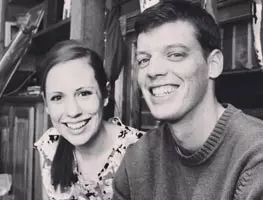- Home
- Patient Stories
- Brooke Cantwell - Primary Bone Cancer
Brooke Cantwell - Primary Bone Cancer
 Brooke Cantwell was a happy, active teen rapidly approaching the end of 8th grade and looking forward to high school. A competitive dancer and athlete, she took aches and pains in stride. So when her knee gave out and she fell while performing a dance routine, Cantwell thought it was either severely bruised or, worse, that she tore a ligament.
Brooke Cantwell was a happy, active teen rapidly approaching the end of 8th grade and looking forward to high school. A competitive dancer and athlete, she took aches and pains in stride. So when her knee gave out and she fell while performing a dance routine, Cantwell thought it was either severely bruised or, worse, that she tore a ligament.
“I had just made the varsity dance team for the high school and I was looking forward to the next school year,” she says. “At age 14, you’re not supposed to worry about your life; you worry about lip gloss.”
X-rays taken at an urgent care center, however, revealed much more. Cantwell had a small mass just above her knee in her femur. Further studies revealed that she had osteosarcoma, or primary bone cancer. While most bone cancers are caused by cancer spreading from another location, less than one percent of cases are considered primary bone cancers, originating within a bone.
“In these cases, patients may not experience any pain until a tumor grows larger and can be felt,” says Douglas J. McDonald, MD, a Washington University orthopedic surgeon who specializes in musculoskeletal oncology. “Oftentimes, like with Brooke, an injury draws attention to the tumor.”
Primary bone cancers are considered childhood cancers because the prime age for them to occur is in the teenage years. The key to treating them successfully is to find the tumors early, before they spread outside of the bone, and to attack any tumors with an aggressive combination of chemotherapy and surgery.
With just over a month left in middle school, Cantwell immediately withdrew from 8th grade and had chemotherapy for up to six hours a day, several days a week for three months. In July, McDonald surgically removed one-third of Cantwell’s femur bone and her knee joint, replacing both with a metal prosthesis and knee.
“We take out the entire bone segment that contains the tumor,” says McDonald. “Because the metal parts are modular components that have been in use for 25 to 30 years, we can put sections together and create any combination of length needed to replace the bone and joint that is removed.”
McDonald has used the modular components to replace femurs, tibias and other extremities as well as the shoulder blade and pelvis. “We can replace the middle of bones or just the ends, or the whole thing,” he says. “The issue is not the length of bone being removed, but whether there are any limitations related to preservation of muscle and nerve function. We even have some endoprosthetics that are expandable to accommodate kids who are still growing.”
Six months of additional chemotherapy followed Cantwell’s surgery. “I missed the first half of my freshman year for more chemotherapy and then rehabilitation,” she says. “You don’t realize how easy it is to walk until you have to re-learn it.”
Through it all, her love of dance prevailed. By her sophomore year, Cantwell was back to competitive dance. “I placed first in all of my individual competitions that year,” she laughs. “My parents were thrilled. It was so nice to be able to dance again!”
Now 24 years old, Cantwell is looking forward to a continued active lifestyle and is busy planning her upcoming wedding.
“I have some restrictions for my knee, but I walk regularly, do weight training and zumba,” she says. “All of my doctors and my care team are invited to my wedding. They’ll see I can still dance!”
More Info: